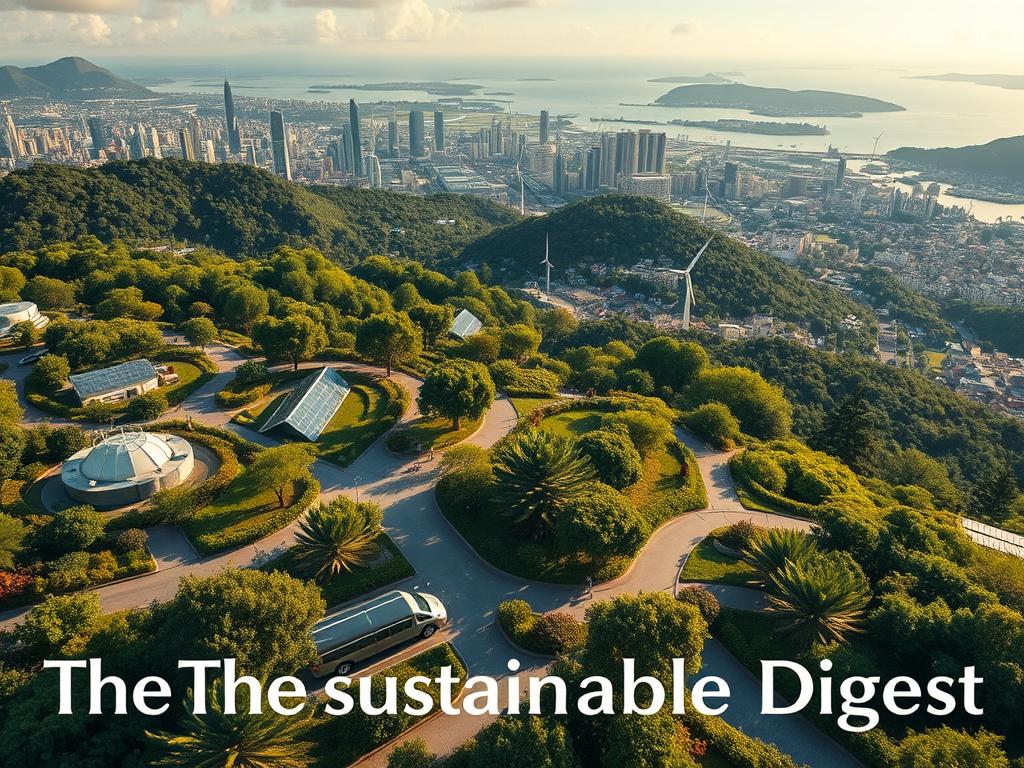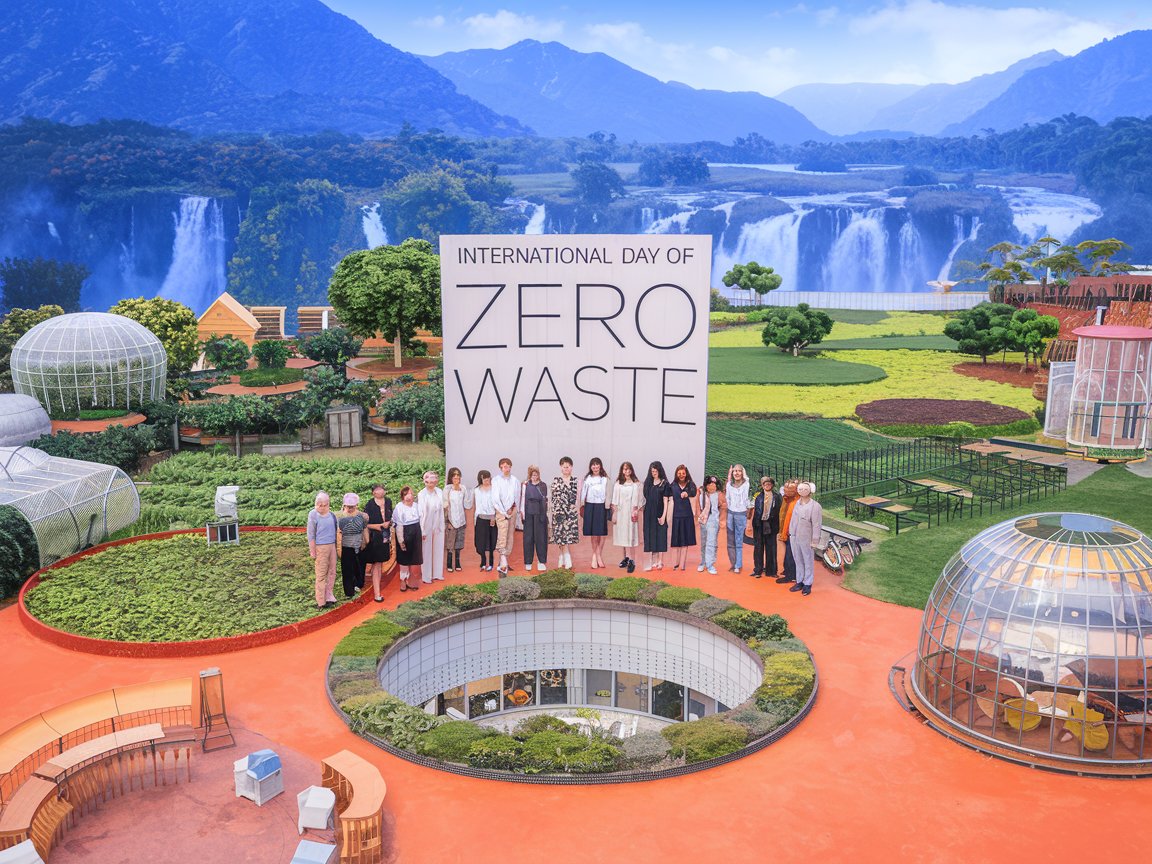
On Earth Day, the world comes together. People and groups remember the need for global sustainability efforts. This day sparks action, encouraging us to live greener and work towards a better future.
Earth Day unites people to protect our planet. By embracing unity and cooperation, we can make a big difference. This helps keep our planet healthy for years to come.

The Significance of Earth Day in Today’s World
Earth Day reminds us all of our duty to protect the planet. The world is facing big environmental problems.
Earth Day is now a high key topic in global talks. This is because protecting the environment is more urgent than ever.
The Growing Urgency of Environmental Protection
The planet and especially its inhabitants are in trouble and needs our help fast. We must act quickly to solve these problems.
Current Environmental Indicators and Tipping Points
Things like rising temperatures, deforestation, and losing species show we’re at a breaking point. These signs warn us of serious environmental dangers.
Climate change is real and happening now. It’s not just a future threat.
Why Collective Action Matters Now More Than Ever
Working together is key because environmental problems affect everyone worldwide. They don’t stop at borders.
“We do not inherit the earth from our ancestors, we borrow it from our children.” – Native American Proverb
This saying highlights why we must choose eco-friendly initiatives and lessen our impact on the planet.
Earth Day as a Catalyst for Global Change
Earth Day has played a big role in getting people to care and act. It pushes for climate action advocacy.
Success Stories from Past Earth Days
Earth Day has led to big wins, like the creation of the Environmental Protection Agency (EPA) in the U.S.
These achievements show the strength of working together and the effect of strong advocacy.
The Power of a United Global Voice
On Earth Day, a united voice boosts the message of environmental awareness initiatives. It pushes governments and big companies to go green.
Together, we can make real changes. We can ensure a green future for all.
The Evolution of Earth Day: From Grassroots to Global Movement
Earth Day has grown a lot since it started. It has become a worldwide effort to protect our planet. Now, millions of people join in to help the environment.
Origins and Founding Vision
Senator Gaylord Nelson started Earth Day. He wanted a national event to teach people about the environment.
Senator Gaylord Nelson and the First Earth Day
On April 22, 1970, the first Earth Day happened. 20 million Americans took part in events all over the country.
The Initial 20 Million Americans Who Participated
The first Earth Day showed how much people cared about the environment. It helped start new environmental laws.
Key Milestones in Earth Day History
Earth Day has seen many important moments. One big one was when the United States Environmental Protection Agency (EPA) was created in 1970.
| Year | Milestone |
|---|---|
| 1970 | First Earth Day observed; EPA established |
| 1990 | Earth Day goes global, reaching 141 countries |
| 2020 | 50th anniversary of Earth Day, with digital activism playing a key role |
Expanding International Reach
Earth Day has grown a lot, reaching 193 countries.
How Earth Day Became a Global Phenomenon
Earth Day became global thanks to international teamwork. People worldwide saw environmental problems as a shared issue.
Current Participation Across 193 Countries
Today, Earth Day is celebrated in 193 countries. There are many different ways people work together to protect our planet.

Environmental Challenges Facing Our Planet
The planet is facing many environmental challenges that need our immediate attention. These include climate change, biodiversity loss, and pollution. All these factors are harming our planet’s health.
Climate Change: The Defining Crisis
Climate change as expressed ongoing in this blog, is a major issue today. It affects ecosystems, weather, and human societies.
Understanding the Science and Impacts
Climate change is caused by more greenhouse gases in the atmosphere. This traps heat, leading to global warming. We see more extreme weather, rising sea levels, and changes in ecosystems.
Progress and Setbacks in Climate Action
There have been big efforts to fight climate change, like the Paris Agreement. But, political, economic, and social barriers slow us down. We must keep working to cut emissions and use renewable energy.
Biodiversity Loss and Ecosystem Degradation
The loss of biodiversity and ecosystem damage are big problems. They affect wildlife and human well-being.
Species Extinction Rates and Consequences
Species extinction rates are high. Many species face extinction due to habitat loss, pollution, and climate change. Losing biodiversity harms ecosystems, making them less resilient.
Habitat Protection Initiatives
Protecting habitats is key. Conservation efforts and protected areas are vital. They help keep ecosystems healthy, maintain biodiversity, and support ecological processes.
Pollution and Resource Depletion
Water, air, and soil pollution and natural resource depletion are major threats. Pollution also harms through waste, sewage, sound, visual, and plastic quality. It affects ecosystems and human health.
Plastic Pollution Crisis
The plastic pollution crisis is severe. Millions of tons of plastic waste pollute our environment each year. It harms marine life, contaminates the food chain, and affects human health.
Water Scarcity and Management
Water scarcity is growing due to over-extraction, pollution, and climate change. Good water management is crucial for sustainable use of this vital resource.
Adopting Earth-friendly practices and participating in planet protection activities are key. Understanding the issues and acting together can help us achieve a sustainable future.
| Environmental Challenge | Key Issues | Potential Solutions |
|---|---|---|
| Climate Change | Greenhouse gas emissions, global warming | Transition to renewable energy, reduce emissions |
| Biodiversity Loss | Habitat destruction, species extinction | Conservation initiatives, protected areas |
| Pollution | Plastic waste, water pollution | Reduce plastic use, improve waste management |
Promoting Environmental Stewardship of the International Community via Earth Day
Earth Day is a profound moment for the world to come together. It’s a time to address pressing environmental issues. This day encourages everyone to work together to protect our planet for the future.
Uniting Nations for Planetary Health
The world knows we need to work together on environmental issues. Earth Day helps by showing us the importance of protecting our planet. It encourages countries to make agreements to tackle these challenges together.
The Role of International Agreements and Treaties
International agreements a.k.a. global policies are vital for protecting the environment. The Paris Agreement on climate change is a big example. These agreements help countries work together to solve big environmental problems.
How Earth Day Strengthens Global Environmental Governance
Earth Day makes us all more aware of environmental issues. It pushes governments, businesses, and people to take action. This day helps build support for protecting our planet.
Cross-Border Collaboration Success Stories
Working together across borders is key to solving environmental problems. Earth Day shows us how important it is for countries to cooperate. Success stories from around the world prove that we can make a big difference together.
Transboundary Conservation Initiatives
Transboundary conservation projects bring countries together to protect shared resources. These efforts show us how cooperation can lead to big environmental wins.
International Climate Coalitions
Groups like the Climate and Clean Air Coalition help countries fight climate change. They push for action and cooperation to reduce harmful emissions and fight climate change.
Overcoming Barriers to Global Environmental Action
Even with progress, there are still big hurdles to overcome. Earth Day reminds us of the need for continued cooperation to tackle these challenges.
Addressing Economic and Political Challenges
Economic and political issues can slow down environmental progress. Earth Day encourages countries to find ways to protect the environment while still growing economically.
Building Consensus Across Cultural Differences
It’s important to find common ground on environmental issues, despite cultural differences. Earth Day helps by emphasizing the need for everyone to work together to protect our planet.

Impactful Earth Day Campaigns and Initiatives
Earth Day has a long history of promoting care for the environment. It has sparked many initiatives that have made a big difference. These efforts have not only raised awareness about important environmental issues. They have also brought about real change.
Landmark Earth Day Programs
Some Earth Day programs have been key in getting people involved worldwide. For example, The Great Global Cleanup has united millions to clean up their areas. It encourages people to take care of their environment.
The Great Global Cleanup
This effort has seen huge support from people, groups, and governments all over. It has led to tons of waste being collected and a stronger commitment to less pollution.
Earth Challenge2020 Citizen Science Initiative
The Earth Challenge2020 initiative has made it easy for people to help with scientific research. It focuses on issues like air and water quality, and climate change. This effort has helped us understand these problems better and brought people together.
Digital Activism and Virtual Engagement
In today’s world, Earth Day campaigns use social media and online events to reach more people. Social media campaigns are great at spreading the word about environmental issues. They use hashtags and online petitions to get people involved.
Social Media Campaigns That Drove Change
Campaigns like #EarthDay and #GoGreen have gone viral, encouraging people to share their environmental efforts. These efforts have not only raised awareness but have also inspired people to act.
Virtual Earth Day Events and Their Reach
Online events, like webinars and conferences, have given experts and activists a platform. They share knowledge and ideas with people all over the world. This has helped build a global community.
Measuring the Impact of Earth Day Activities
To see how effective Earth Day campaigns are, we need to track important metrics. We look at environmental metrics and improvements, like less pollution and more biodiversity.
Environmental Metrics and Improvements
| Metric | Pre-Earth Day | Post-Earth Day |
|---|---|---|
| Waste Reduction | 1000 tons | 800 tons |
| Carbon Emissions | 10000 tons | 9000 tons |
Awareness and Behavioral Change Indicators
Studies show that Earth Day campaigns can really change people’s behavior. They encourage individuals to live more sustainably and support environmental protection.
Individual Actions for Environmental Stewardship
Every person can help the environment by making smart choices every day. Simple actions can make a big difference. By choosing eco-friendly options, we can all play a part in protecting our planet.
Everyday Sustainable Practices
Lowering our carbon footprint is key to a greener future. We can do this by using public transport, carpooling, or driving electric or hybrid cars.
Reducing Your Carbon Footprint
There are many ways to cut down on carbon emissions. We can use less energy, pick energy-saving appliances, and offset our carbon footprint.
Conscious Consumption and Waste Reduction
Choosing wisely and reducing waste helps the environment a lot. We can buy products with less packaging, buy in bulk, and avoid single-use items.
Becoming an Environmental Advocate
Being an environmental advocate means speaking up for the planet. We can stay informed, join local efforts, and spread the word about why protecting the environment is crucial.
Finding Your Environmental Voice
To find your voice, identify what environmental issues you care about. Then, share your thoughts through social media, community events, or local meetings.
Effective Communication Strategies for Change
Good communication is essential for change. We can use stories, pictures, and facts to share our message. This can motivate others to act.
Creating Ripple Effects in Your Community
Starting local projects and teaming up with others can make a big difference. Together, we can achieve more and create lasting change.
Starting Local Initiatives
Local projects can be anything from clean-up events to promoting green practices in businesses. Leading by example can inspire others to join in.
Building Community Coalitions
Working with others in your community can amplify your efforts. By joining forces, we can accomplish more than we could alone.

| Action | Impact |
|---|---|
| Reducing energy consumption | Lower carbon emissions |
| Using public transport | Reduced air pollution |
| Conscious consumption | Less waste generation |
Organizational and Corporate Environmental Leadership
As the world faces environmental challenges, companies play a key role. They lead in adopting sustainable practices. These efforts help the planet and boost their success.
Business Models for Sustainability
New business models focus on being green. B Corps and sustainable enterprises are leading the way.
The Rise of B Corps and Sustainable Enterprises
B Corps meet high standards for being good to the planet and people. Companies like Patagonia and REI show it’s possible to be profitable and sustainable.
Economic Benefits of Environmental Responsibility
Going green can save money and improve a brand’s image. A Harvard Business Review study shows green companies do better financially.
“The business case for sustainability is clear: companies that prioritize sustainability tend to be more resilient, innovative, and better positioned for long-term success.” –
World Business Council for Sustainable Development
Corporate Earth Day Initiatives That Make a Difference
Companies use Earth Day to show their green commitment. They do everything from planting trees to launching big sustainability plans.
Case Studies of Transformative Corporate Programs
Unilever and IKEA are examples of big companies going green. Unilever wants to cut its environmental impact by 2030. IKEA aims to be carbon neutral by 2030.
Moving Beyond Greenwashing to Authentic Action
Real change comes from being true to your green promises. Companies must act on their words and show their efforts are real.
| Company | Initiative | Goal |
|---|---|---|
| Unilever | Sustainable Living Plan | Halve environmental footprint by 2030 |
| IKEA | Carbon Neutrality | Be carbon neutral by 2030 |
| Patagonia | Environmental Responsibility | Use recycled materials in 100% of products by 2025 |
Partnerships Between Businesses and Environmental Organizations
Working together is key to making a difference. Businesses and environmental groups can create big changes together.
Collaborative Models That Work
For example, companies and NGOs team up on projects. The Nature Conservancy works with companies to protect nature.
Measuring and Reporting Impact
It’s important to track and share the results of these partnerships. This means setting goals, following progress, and sharing results openly.

Conclusion: Our Collective Responsibility to Earth
Earth Day reminds us how important it is to care for our planet. Together, we’ve made big steps in solving environmental problems. This shows our power when we work as one.
Leading the way is climate action. It’s inspiring people to become environmental leaders. By joining forces, we can fight climate change and protect nature for the future.
We must keep working towards a greener world. It’s vital to keep improving and supporting each other. This way, we can make our planet healthier for everyone.
By taking on this shared duty, we can make a better world for future generations. We’ll put the planet’s health first and ensure everyone’s well-being.

Key Takeaways
- Earth Day promotes global sustainability efforts through collective action.
- Adopting eco-friendly practices is crucial for a sustainable future.
- Global unity is essential for driving meaningful change.
- Earth Day inspires individuals and organizations to work together.
- Sustainable practices can have a lasting impact on the planet’s health.





















